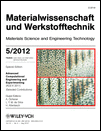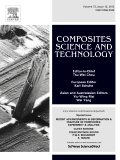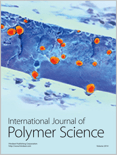
Elastomers and Composites
Scope & Guideline
Unveiling Insights in Advanced Material Synthesis
Introduction
Aims and Scopes
- Elastomer Characterization and Properties:
Research focusing on the physical, thermal, and mechanical properties of elastomers, including their behavior under various conditions and the impact of different fillers or additives. - Composite Material Development:
Studies that explore the formulation, processing, and performance of composite materials, particularly those that incorporate elastomers with reinforcements like fibers, nanoparticles, or other polymers. - Sustainable Materials and Recycling Methods:
Investigations into bio-based materials, recycling techniques, and the environmental impact of elastomers and composites, aiming for sustainable alternatives in various applications. - Advanced Processing Techniques:
Research on innovative processing methods such as 3D printing, injection molding, and various curing techniques that enhance the performance and applicability of elastomeric materials. - Application-Specific Studies:
Examinations of elastomers and composites in specific applications, such as automotive parts, construction materials, and electronic devices, addressing industry-relevant challenges. - Nanotechnology in Elastomers:
Exploration of the incorporation of nanomaterials into elastomer systems to enhance properties such as thermal stability, mechanical strength, and electrical conductivity.
Trending and Emerging
- Bio-based and Sustainable Composites:
There is a growing emphasis on the development of bio-based composites and sustainable alternatives to conventional plastics, highlighting environmental concerns and the pursuit of greener materials. - Nanocomposites and Advanced Functional Materials:
The integration of nanomaterials into elastomers to enhance their properties is rapidly gaining attention, showcasing advancements in material science that enable novel applications. - Smart and Responsive Materials:
Research into elastomers that exhibit smart properties, such as self-healing, shape memory, or stimuli responsiveness, is on the rise, driven by advancements in technology and application potential. - Thermal and Photocatalytic Applications:
An increasing number of studies focus on materials designed for thermal management and photocatalytic applications, reflecting a trend towards multifunctional materials. - Wear and Abrasion Studies for Tire Applications:
The analysis of wear behavior in elastomer composites, particularly for tire tread applications, continues to trend upwards, underscoring its importance in automotive engineering.
Declining or Waning
- Traditional Rubber Compounding Techniques:
Research focusing on conventional methods of rubber compounding and their applications appears to be declining, as modern alternatives and innovations gain traction. - Basic Mechanical Testing Methods:
Studies centered on traditional mechanical testing methods for elastomers are less frequent, possibly due to the emergence of more sophisticated characterization techniques. - Use of Conventional Fillers:
There seems to be a waning interest in the use of traditional fillers like carbon black and silica in favor of novel materials that provide enhanced properties or sustainability. - Limited Focus on Pure Elastomer Systems:
Research focusing solely on pure elastomers without composite formulations is becoming less common, indicating a trend towards hybrid and composite materials. - Historical Reviews of Elastomer Technologies:
While reviews are essential, the frequency of historical overviews of elastomer technologies appears to be decreasing, possibly in favor of more forward-looking research.
Similar Journals

Journal of Polymer & Composites
Fostering Dialogue Between Academia and Industry in Composite Research.Journal of Polymer & Composites, with ISSN 2321-8525 and E-ISSN 2321-2810, is an esteemed academic journal published by STM JOURNALS, dedicated to the advancement of knowledge in the rapidly evolving fields of polymer science and composite materials. The journal serves as a pivotal platform for researchers and professionals, offering cutting-edge research articles, reviews, and case studies that explore innovative developments and applications in polymer chemistry, material science, and engineering. Although currently lacking an impact factor citation, the journal aims to foster dialogue among academia and industry partners, addressing the latest trends and breakthroughs that drive the field forward. With a commitment to scholarly excellence, the Journal of Polymer & Composites is positioned as an essential resource for enhancing the understanding of polymer composites and their multifaceted applications. Notably, STM JOURNALS' reputation for quality publications underscores the journal’s importance in facilitating impactful research and educational initiatives worldwide.

Journal of Rubber Research
Fostering Innovation through Rubber Research ExcellenceJournal of Rubber Research is an authoritative publication dedicated to the exploration and advancement of rubber science and technology, disseminated by SPRINGER SINGAPORE PTE LTD. With an ISSN of 1511-1768 and an E-ISSN of 2524-3993, this journal serves as a critical platform for researchers, professionals, and students interested in the intricacies of rubber, from cultivation to processing and product development. Although coverage in Scopus was discontinued after 2017, the journal provides valuable insights into its core areas, namely Agricultural and Biological Sciences and Chemistry, with Scopus ranks highlighting its niche position within these categories. The journal's objective is to facilitate knowledge transfer and inspire innovative approaches in rubber research, thereby contributing meaningfully to global discussions on sustainability and technological advancements within the industry. As a cornerstone for scholarly discourse in rubber science, the Journal of Rubber Research remains essential for those seeking to enhance their understanding of this vital resource.

MATERIALWISSENSCHAFT UND WERKSTOFFTECHNIK
Bridging Theory and Application in Materials Technology.MATERIALWISSENSCHAFT UND WERKSTOFFTECHNIK, published by WILEY-V C H VERLAG GMBH, is a prominent journal dedicated to the field of materials science and engineering. With its ISSN 0933-5137 and E-ISSN 1521-4052, this journal serves as a vital resource for researchers and professionals engaged in exploring the intricate relationships between the properties of materials and their applications. Established in 1970 and continuing through 2024, the journal has been consistently recognized in various categories, achieving a Q3 ranking in 2023 across Condensed Matter Physics, Materials Science (miscellaneous), Mechanical Engineering, and Mechanics of Materials. Although it does not offer open access, its high-quality peer-reviewed content is fundamental to the advancement of knowledge within its three key areas: novel material development, material characterization, and application of materials in engineering contexts. As a driving force in the scientific community, MATERIALWISSENSCHAFT UND WERKSTOFFTECHNIK continues to cater to the curiosity of aspiring students, seasoned professionals, and researchers alike, facilitating a deeper understanding of the complexities of material technology.

JOURNAL OF CELLULAR PLASTICS
Innovating Materials Chemistry for TomorrowThe JOURNAL OF CELLULAR PLASTICS, published by SAGE PUBLICATIONS LTD, stands as a significant resource in the fields of Chemistry, Materials Chemistry, and Polymers and Plastics. With an ISSN of 0021-955X and an E-ISSN of 1530-7999, this esteemed journal has been contributing to scientific knowledge since its inception in 1965 and is slated to continue its impactful publication through 2024. Ranking in the Q2 category across its respective fields in 2023, and consistently positioned within the 61st to 63rd percentile in Scopus rankings, it is recognized for disseminating high-quality research that advances our understanding of cellular plastics. Although it operates under a subscription model, the journal remains dedicated to fostering scholarly discourse and innovation, making it an essential platform for researchers, industry professionals, and students eager to explore the latest advancements in polymer science.

Composites Research
Elevating Knowledge in the World of CompositesComposites Research is an esteemed academic journal dedicated to advancing the field of composite materials, published by the Korean Society of Composite Materials. With a focus on innovative research and development, this journal serves as a vital platform for researchers, professionals, and scholars in the field, promoting high-quality papers that discuss both theoretical and practical aspects of composite materials. Although it operates under a traditional access model, the journal remains committed to disseminating essential knowledge and cutting-edge findings relevant to the latest trends and technological advancements in composites. The ISSN 2288-2103 and E-ISSN 2288-2111 ensure the widespread visibility and accessibility of published works. The journal is strategically positioned to contribute to the growing body of knowledge in composite research, enabling the exchange of ideas and collaboration among a global audience.

COMPOSITES SCIENCE AND TECHNOLOGY
Pioneering Research in Composite Materials and EngineeringComposites Science and Technology, a premier journal published by Elsevier Sci Ltd, serves as a vital resource in the fields of composite materials and engineering. With an impressive 2023 impact factor reflecting its influential contributions, this journal has established itself within the top tier of academic publishing, flaunting a Q1 ranking in both the Ceramics and Composites and Engineering (Miscellaneous) categories. Covering a diverse range of topics from the development of novel composite materials to their practical applications across various industries, it is recognized for its rigorous peer-review process and high-quality research outputs. As reflected in its Scopus rankings, Composites Science and Technology places in the 97th percentile among general engineering journals and the 94th percentile amongst ceramics and composites science literature. Researchers and professionals alike benefit from its comprehensive access to cutting-edge discoveries and advancements, making it an indispensable tool for driving innovation within this dynamic field.

KGK-Kautschuk Gummi Kunststoffe
Unveiling Cutting-Edge Research in Materials EngineeringKGK-Kautschuk Gummi Kunststoffe is a prominent journal dedicated to the fields of industrial and manufacturing engineering, materials chemistry, mechanical engineering, and polymers and plastics. Published by DR ALFRED HUTHIG VERLAG GMBH in Germany, this journal has established itself as a vital resource for researchers and professionals involved in the rubber, elastomers, and polymer industries since its inception in 1978. With an emphasis on contemporary advancements and emerging technologies, the journal aims to disseminate cutting-edge research and developments in the understanding of material properties, processing techniques, and applications. While the journal is categorized in the Q4 quartile across multiple disciplines in 2023, it still plays a crucial role in bridging the gap between theory and practical innovation. Researchers, professionals, and students alike are encouraged to contribute to and engage with the latest insights in this dynamic field, fostering collaboration and knowledge sharing to advance applications in industry and academia.

Journal of Composites Science
Connecting Ideas, Driving Progress in CompositesThe Journal of Composites Science, published by MDPI, is a premier Open Access journal dedicated to advancing the field of composites and materials science. Launched in 2017, this innovative journal provides a platform for researchers, professionals, and students to share findings, methodologies, and insights related to composites, ceramics, and engineering applications. With an impressive Q2 ranking in both the Ceramics and Composites and Engineering (miscellaneous) categories for 2023, the journal is well-positioned within the academic community, ranking 48th out of 204 in miscellaneous engineering and 47th out of 127 in ceramics and composites according to Scopus. The journal's open-access model ensures that high-quality research is widely available to the scientific community, fostering collaboration and innovation. Situated in defensive Switzerland at ST ALBAN-ANLAGE 66, CH-4052 BASEL, the Journal of Composites Science is an essential resource for those seeking to stay at the forefront of the composites domain and drive progress in engineering practices.

Composites and Advanced Materials
Advancing the Future of Material ScienceComposites and Advanced Materials, published by SAGE Publications Ltd, is a pioneering open access journal launched in 2021 that provides a dedicated platform for disseminating cutting-edge research in the field of composite materials and their advanced applications. With a growing global emphasis on sustainability and technology innovation, this journal serves as an essential resource for researchers, professionals, and students keen to explore the latest advancements in material science. Featuring rigorous peer-reviewed articles, the journal not only aims to enhance the scientific dialogue around composite materials but also facilitates the exchange of ideas that propel the field forward. The journal is easily accessible, catering to a wide audience interested in the future of materials engineering, and it strives to uphold its mission of fostering collaborative research and dialogue across disciplines.

International Journal of Polymer Science
Fostering Collaboration in Polymer InnovationInternational Journal of Polymer Science is a prominent and peer-reviewed journal dedicated to advancing the field of polymer science. Published by Hindawi Ltd, this open-access journal has been making significant contributions to the discipline since its inception in 2009, ensuring that research findings are accessible to a global audience. With an impressive impact factor and positioned in the Q2 quartile for Polymers and Plastics as of 2023, it ranks 46th out of 161 in the Scopus database, reflecting its strong standing in the research community. The journal welcomes innovative research across various topics within polymer science, including synthesis, characterization, and applications in diverse industries. By providing a platform for scholars, professionals, and students, the International Journal of Polymer Science not only encourages the dissemination of knowledge but also fosters collaboration and innovation in this essential field. Based in Egypt and operating under a rigorous selection process, it remains a vital resource for anyone involved in polymer research.